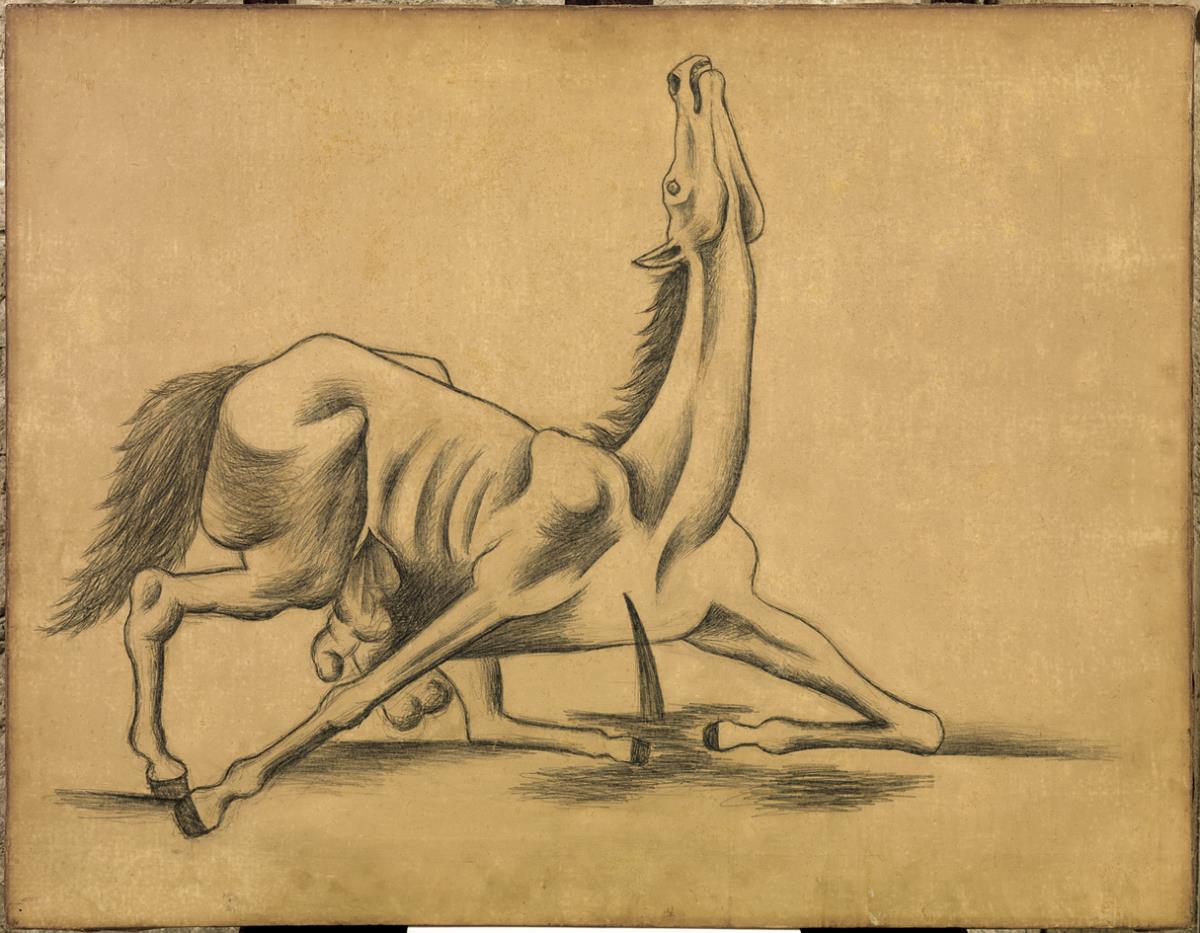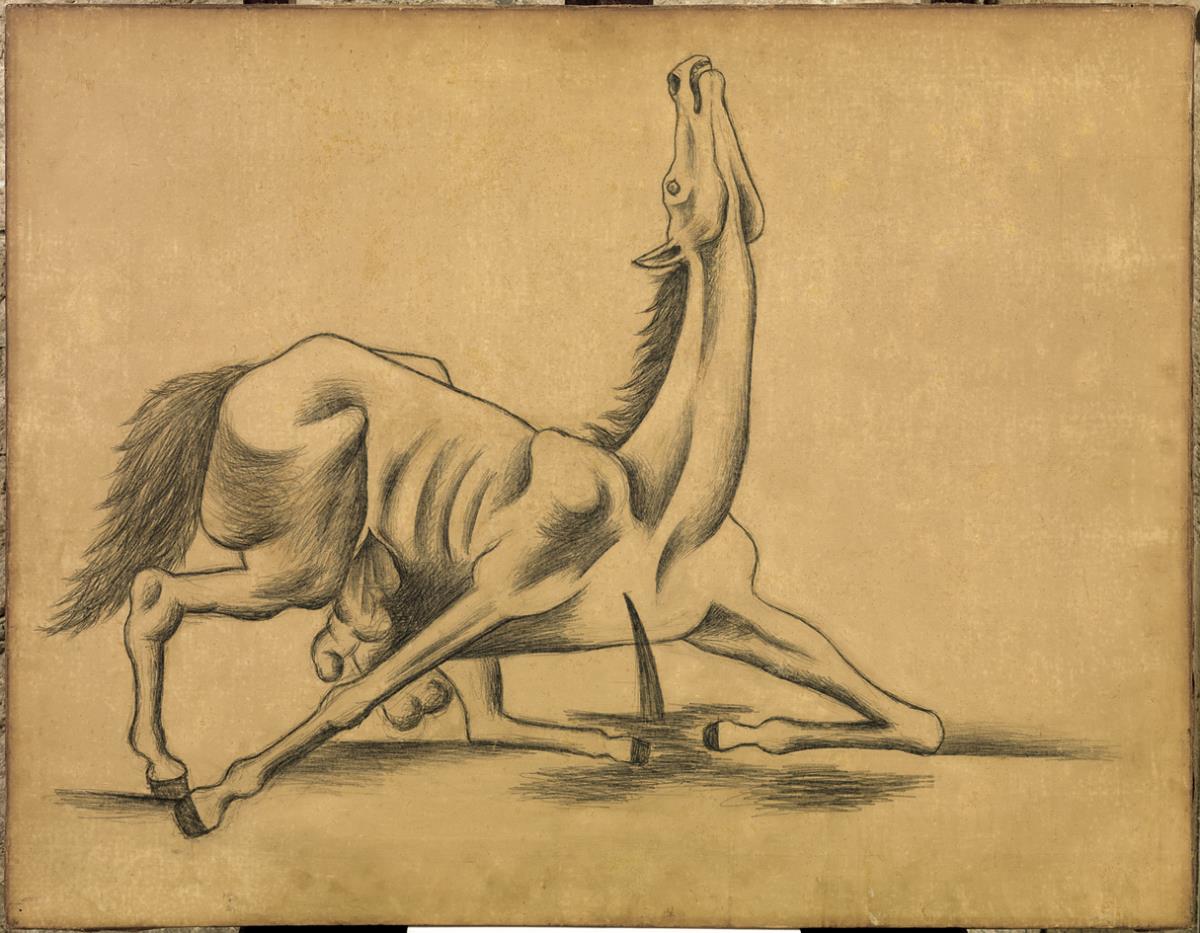Gored Horse

Gored Horse
Gored Horse
Since his childhood and throughout his life, Picasso was a devoted bullfighting enthusiast, which is why bullfighting is one of the recurring themes in his work. During his stay in Barcelona between June and November 1917, he had the opportunity to attend more than one bullfight, and a postcard he sent to his friend Guillaume Apollinaire on 18 October attests to this: “I met Picabia at the bullfights on Sunday.” In contrast to what he had mostly done on previous occasions, here the artist leaves aside the colourful and festive representation of the spectacle of bullfighting to focus his attention, like a close-up shot and in the wake of Goya and Gutiérrez Solana, on the solitary agony of the disemboweled horse, which collapses until it falls on its knees in a fetal position or prayer posture that has been compared to that of a fossilised crustacean or bird. Picasso manages to transcribe the animal’s stabbing pain by means of its outstretched neck and raised head, looking upwards with a fixed gaze, as if asking for mercy to put an end to its cruel agony, once and for all. Its concave mouth represents a “pathos” formula, previously used as a resource for certain figures of the blue period, which gives the horse a double condition, that of both animal and human. The drama and cruelty of the scene reaches its zenith with the horn that sprouts from the ground and stands threateningly, waiting for the horse to finish collapsing to then finish it off. With a firm and vigorous line made with a graphite pencil on canvas with an ocher colour primer, Picasso modelled the figure of the animal with exquisite quality of form and marked expressionism, which we also find in the notes he took in the sketchbooks that correspond to his stay in Barcelona in 1917. Despite the distance in time, it can be considered a precedent of “Guernica”.
Located in
CP Sala 0980.2 cm x 103.3 cm
Gift of Pablo Picasso, 1970
MPB 110.012







